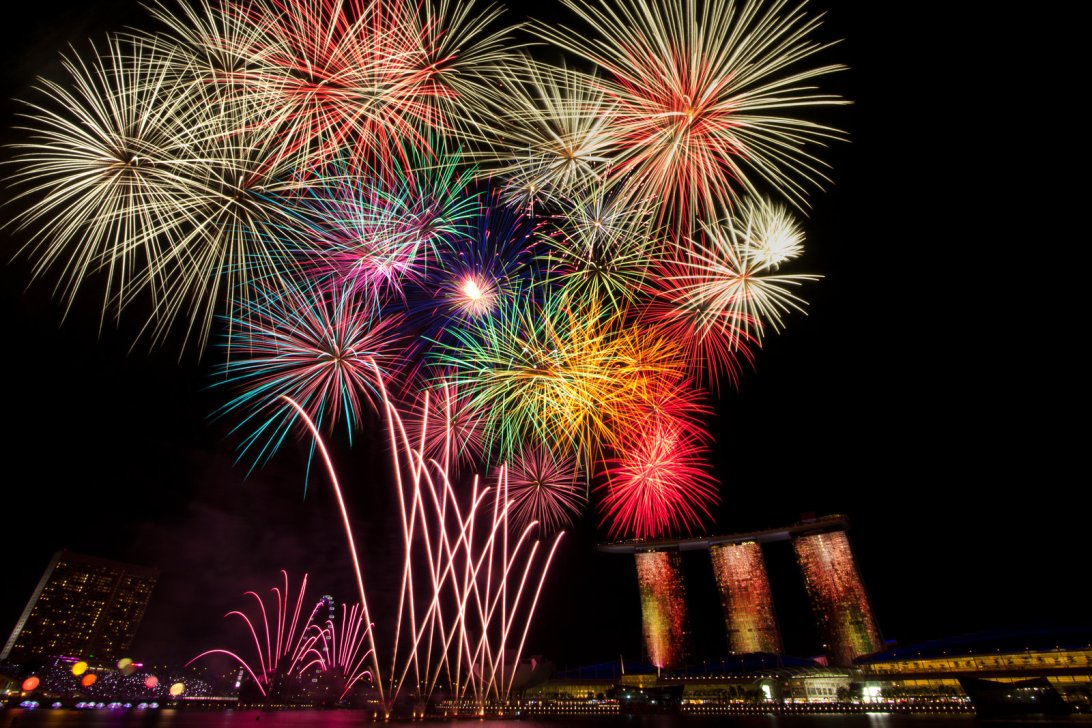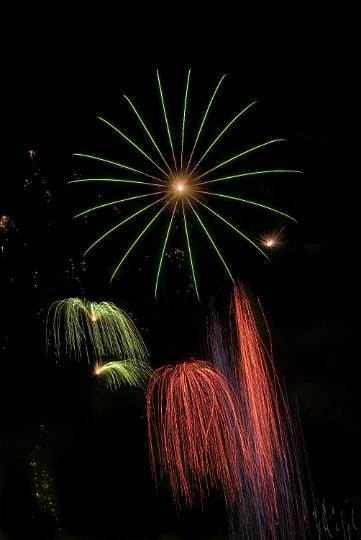Independence Day PyroTECHnics
 Originally invented by the Chinese over 2000 years ago, fireworks have a long and storied history of accompanying many a memorable celebration through the ages… But no other holiday is quite so strongly associated with fireworks like the Fourth of July. Fireworks and the Fourth of July have been synonymous since–well, since the very first celebration of Independence Day on July 4, 1777, when that first generation of Americans was treated to a display of thirteen stars. These dazzling (and deafening) displays of light and color are one of the highlights of summer. We look forward each year to seeing our local fireworks display, ooh-ing and ahh-ing at each brief flash of brilliance, but do you ever wonder as the sparks burn away overhead just how it’s done?
Originally invented by the Chinese over 2000 years ago, fireworks have a long and storied history of accompanying many a memorable celebration through the ages… But no other holiday is quite so strongly associated with fireworks like the Fourth of July. Fireworks and the Fourth of July have been synonymous since–well, since the very first celebration of Independence Day on July 4, 1777, when that first generation of Americans was treated to a display of thirteen stars. These dazzling (and deafening) displays of light and color are one of the highlights of summer. We look forward each year to seeing our local fireworks display, ooh-ing and ahh-ing at each brief flash of brilliance, but do you ever wonder as the sparks burn away overhead just how it’s done?
 The construction of fireworks is much more complicated than it looks. Each one begins as a shell which is then packed with precise ratios of chemicals strategically placed to create the star- or flower-shaped bursts. The size of the blast, the amount of light it emits, the color, the shape, and any special effects or sounds it may make are all determined by the mixture of elements, the size and construction of the shell, and the placement of the ingredients within it. A lot of work goes into each and every firework, as you can see in this slideshow. Even the choreography must be painstakingly detailed, often taking hours just to plan a few minutes’ of a display set to music.
The construction of fireworks is much more complicated than it looks. Each one begins as a shell which is then packed with precise ratios of chemicals strategically placed to create the star- or flower-shaped bursts. The size of the blast, the amount of light it emits, the color, the shape, and any special effects or sounds it may make are all determined by the mixture of elements, the size and construction of the shell, and the placement of the ingredients within it. A lot of work goes into each and every firework, as you can see in this slideshow. Even the choreography must be painstakingly detailed, often taking hours just to plan a few minutes’ of a display set to music.
And yet, as much thought and effort goes into these yearly festivities, there are still those who claim to be bored by such displays of scientific achievement. Well, for those who are still not impressed, take a look at this video of fireworks in reverse and try not to be mesmerized.
For more detailed information on how fireworks are made, check out this article from Popular Mechanics.

